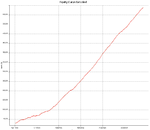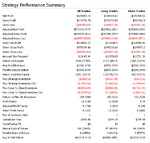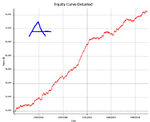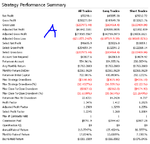I have been playing around with mechanical strategies, and have found one that I am happy with. I have backtested it but the results look a bit "too good to be true"*. I have done the following to make sure I'm not making stupid mistakes:
* Tested it on out of sample data (strategy designed on 6m sample, tested on 3yrs)
* Significant sample size
- Instrument 1: 6,801 trades from 13th March 2007
- Instrument 2: 5,121 trades from 13th March 2007
* Been through the backtesting logic to make sure I'm not buying at unavailable prices
* Included commissions and slippage (aggressively)
* picked out trades from the sample and "sanity checked" them
* I am not holding overnight positions
* forward tested the methodoligy
Can any of you guys with more experience give me some guidance as to other things I should check?
Thanks
G
* Without compounding:
Instrument 1 - $10,000 -> $126,028
Instrument 2 - $10,000 -> $154,475
* Tested it on out of sample data (strategy designed on 6m sample, tested on 3yrs)
* Significant sample size
- Instrument 1: 6,801 trades from 13th March 2007
- Instrument 2: 5,121 trades from 13th March 2007
* Been through the backtesting logic to make sure I'm not buying at unavailable prices
* Included commissions and slippage (aggressively)
* picked out trades from the sample and "sanity checked" them
* I am not holding overnight positions
* forward tested the methodoligy
Can any of you guys with more experience give me some guidance as to other things I should check?
Thanks
G
* Without compounding:
Instrument 1 - $10,000 -> $126,028
Instrument 2 - $10,000 -> $154,475




